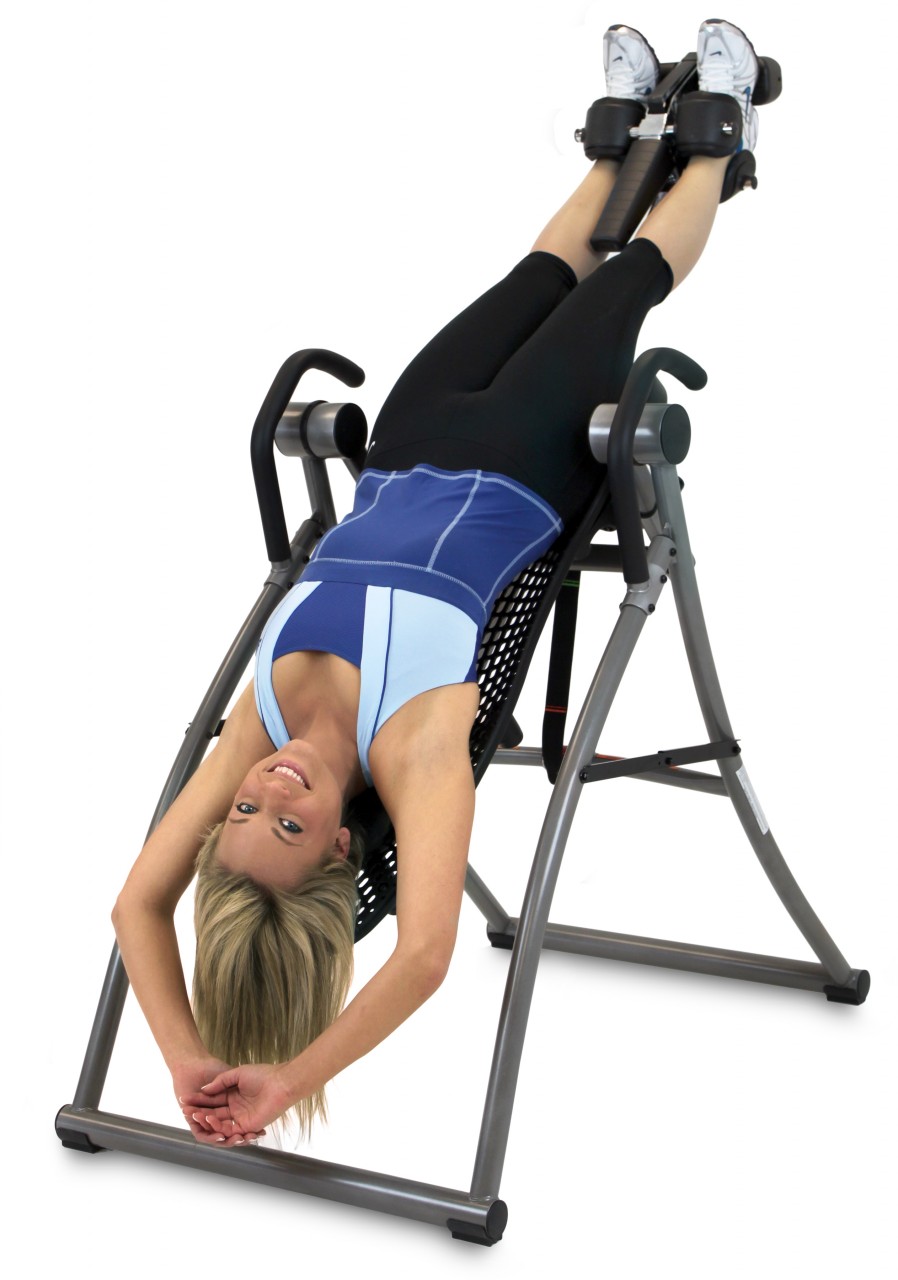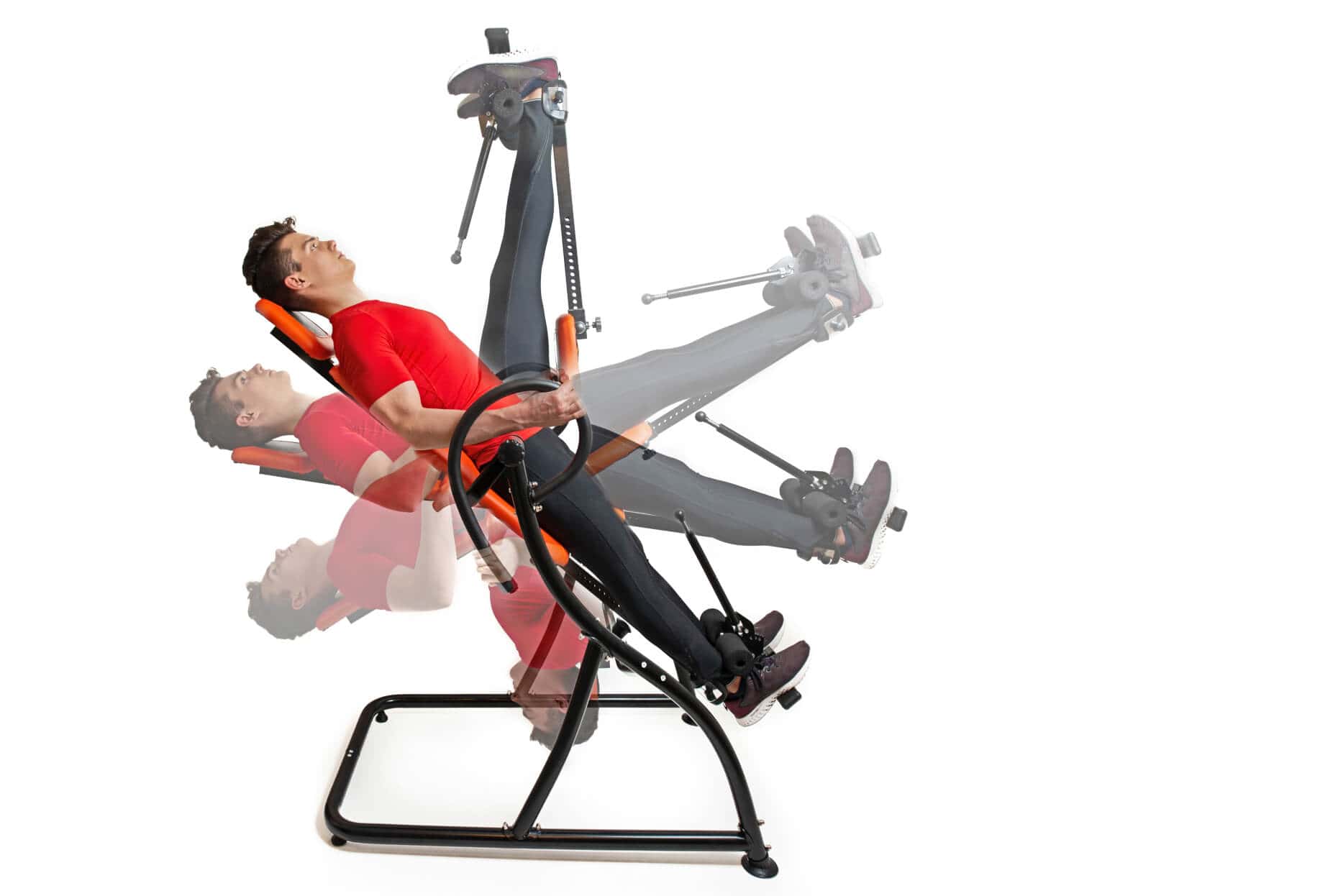Inversion therapy is a type of treatment that involves hanging upside down, or at an inverted angle, for a short period of time. The aim of inversion therapy is to relieve pressure on the spine and other joints in the body. Inversion therapy is often used to treat back pain, but it can also be used to treat other conditions such as headaches and migraines.
There is some evidence to suggest that inversion therapy may be effective in treating these conditions, but more research is needed.
An inversion table is a device that allows you to hang upside down, or at an inverted angle. This position helps to decompress the spine and relieves pressure on the discs and nerves. It can also help to improve blood circulation and reduce muscle tension.
Inversion therapy has been used for centuries to treat back pain, but it’s only recently that inversion tables have become popular as a way to perform this type of therapy at home.
If you’re considering using an inversion table, it’s important to understand how they work and what the potential risks are. In this article, we’ll give you a rundown of how inversion tables work and what you should know before using one.
Inversion tables are designed so that you can strap your feet or ankles into them securely and then adjust the table so that your body is suspended upside down or at an inverted angle. When your body is inverted, gravity pulls your vertebrae away from each other, which takes pressure off of the discs and nerves in your spine. This decompression can provide relief from back pain, Sciatica nerve pain , headaches, and even fatigue .
One of the benefits of using an inversion table is improved blood circulation . When you’re upright, gravity pulls blood down into your lower extremities. This can cause pooling in the legs and feet, which can lead to varicose veins .
When you inverterse , gravity pulls blood back up toward your head , which helps to improve circulation throughout your body. Improved circulation can also help to reduce muscle tension by delivering more oxygen-rich blood to muscles .
In addition to improved circulation and reduced pressure on the spine , inverting may also help to increase flexibility .
Using an Inversion Table for Back Pain Relief
What are the Cons of an Inversion Table?
An inversion table is a device that allows you to hang upside down, with your head below your feet. This position reverses the force of gravity on your body, and can provide various health benefits. However, there are also some potential downsides to using an inversion table.
One downside is that it can be difficult to get used to the sensation of being upside down. It’s not uncommon for people to feel dizzy or lightheaded at first, and it may take some time to adjust to the sensation. Additionally, if you have any underlying medical conditions (such as high blood pressure or heart disease), you should check with your doctor before using an inversion table, as it could potentially make your condition worse.
Another possible downside is that inverting can put added strain on your spine and joints. If you have any pre-existing back or joint problems, you should talk to your doctor before using an inversion table. Additionally, it’s important not to overdo it when first starting out – use small amounts of time inverted at first and gradually increase the duration as your body adjusts.
Finally, while inverting can provide some health benefits, it’s important to remember that it’s not a miracle cure-all. Inversion therapy should be used in conjunction with other healthy lifestyle choices (such as maintaining a good posture, exercising regularly and eating a healthy diet) for best results.
Who Should Not Use an Inversion Table?
An inversion table is a device that allows you to suspend yourself upside down. It uses the force of gravity to decompress your spine and relieve pressure on your discs and nerves. Inversion therapy has been used for centuries to treat back pain, but it’s not for everyone.
If you have glaucoma, high blood pressure, heart disease or are pregnant, you should not use an inversion table.
People with glaucoma should not use inversion therapy because it can increase intraocular pressure (IOP), which can lead to optic nerve damage and vision loss. High blood pressure can also be increased by inversion therapy, which can put strain on the heart and potentially lead to a stroke.
If you have heart disease, using an inversion table can also be dangerous as it puts additional strain on the heart. Finally, pregnant women should avoid using inversion tables as well as any other type of inverting device due to the risk of harming the baby.
If you’re considering using an inversion table for back pain relief, talk to your doctor first to make sure it’s safe for you.
Do Inversion Tables Help With Lower Back Pain?
Inversion tables are a type of exercise equipment that allow you to suspend yourself upside down. This position can help to decompress the spine and relieve pressure on the discs and nerves in the lower back. Inversion therapy is often used as a treatment for lower back pain.
There is some evidence to suggest that inversion therapy may be effective for treating lower back pain. A 2012 study found that inversion therapy was able to significantly reduce levels of disability and pain in people with chronic low back pain. However, it’s important to note that this study was small and more research is needed to confirm these findings.
If you’re considering using an inversion table for your lower back pain, it’s important to speak with your doctor first. Inversion therapy isn’t suitable for everyone, and there are some risks associated with it. These risks include dizziness, nausea, headaches, and increased blood pressure.
It’s also important to use an inversion table correctly to avoid injury.
How Long Should a Beginner Use an Inversion Table?
An inversion table is a great tool for decompressing the spine and relieving back pain. However, it’s important to use it safely and effectively. So how long should a beginner use an inversion table?
Ideally, a beginner should start with two or three minutes of inverting per day. This can be increased gradually over time as you become more comfortable with the sensation and your body adapts to being upside down. Some people eventually work up to inverting for 20 minutes or more at a time.
Remember to listen to your body and stop if you feel any pain or discomfort while inverted. It’s also important to warm up before inverting, and to cool down afterwards with some gentle stretches. With regular use, an inversion table can provide significant relief from back pain.

Credit: www.performancehealthandchiro.com
How Long Should I Use an Inversion Table for Sciatica
If you’re suffering from sciatica, you may be wondering how long you should use an inversion table for relief. The answer depends on the severity of your sciatica and how well you respond to inversion therapy.
In general, it’s recommended that you start with short inversion sessions (5-10 minutes) and gradually increase the duration as your pain improves.
Some people find that one or two sessions per day are all they need to keep their sciatica at bay. Others may need to invert several times a day or for longer periods of time to achieve similar results.
There’s no hard and fast rule for how long you should use an inversion table for sciatica, but most people find that consistent use provides the best results.
If you’re not seeing any improvement after a week or two of regular inversion, it’s worth talking to your doctor or physical therapist to see if another treatment option may be more appropriate for you.
How to Use an Inversion Table
If you’re looking for a way to improve your spinal health and relieve back pain, you may want to try using an inversion table. An inversion table is a device that allows you to hang upside down, with the help of gravity, to stretch your spine and decompress your vertebrae.
Here’s how to use an inversion table:
1. Adjust the height of the table so that when you lie down on it, your body will be hanging at a comfortable level.
2. Position yourself on the table so that your head is lower than your feet and your back is flat against the padded surface.
3. Use the straps or handles provided to secure yourself in place.
4. Slowly lean back until your body is inverted at a desired angle. You can stay at this angle for as long as you feel comfortable; most people remain inverted for 1-3 minutes initially.
5. To return to an upright position, slowly raise yourself up by pushing with your arms or legs until you reach a vertical position.
How to Use an Inversion Table for Lower Back Pain
If you’re looking for a way to ease lower back pain, you may want to try using an inversion table. Inversion therapy involves hanging upside down or at an inverted angle, which can help decompress the spine and take pressure off of your nerves. This can provide relief from conditions like herniated discs, degenerative disc disease, sciatica, and more.
Before using an inversion table, it’s important to speak with your doctor to make sure this type of therapy is right for you. Once you have the go-ahead, follow these tips to get started:
1. Choose the right table.
Inversion tables come in different sizes and styles, so it’s important to find one that fits your body type and needs. If you have a larger frame, look for a heavy-duty option that can accommodate your weight. And if you have any mobility issues, opt for a table that’s easy to get on and off of.
2. Start slowly. When first starting out with inversion therapy, it’s important not to overdo it. Hang upside down for just a few minutes at a time and gradually increase the amount of time as your body adjusts.
3 . Use proper form . When hanging from the inversion table , be sure to keep your back straight and avoid arching your spine .
This will help prevent injuries and ensure you’re getting the most out of the treatment .
4 . Don’t forget to stretch .
Stretching both before and after using an inversion table can help improve results . Try some simple back stretches or yoga poses designed specifically for easing back pain .
By following these tips , you can safely use an inversion table to ease lower back pain . Remember to listen to your body and stop if you start feeling any discomfort .
Conclusion
An inversion table is a device that allows you to hang upside down, and it is said to provide numerous health benefits. How does it work? Well, when you are inverted, your bodyweight presses against your spine, which decompresses the vertebrae and discs.
This can help to relieve pain in the lower back and improve flexibility. Additionally, inverting can increase blood circulation and reduce inflammation. Some people also find that it helps to improve their mood and energy levels.
